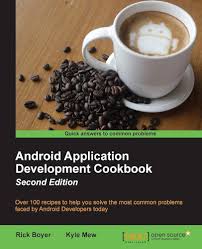Android Application Development Cookbook
The introduction of the “Android Application Development Cookbook” sets the stage for developers embarking on their journey to create powerful and innovative Android applications. It typically outlines the goals and structure of the book, highlighting the diverse topics it covers and the approach it takes to address them.
In the introduction, you can expect to find:
- Objectives: The introduction may articulate the main objectives of the cookbook, such as providing practical guidance, addressing common challenges, and empowering developers to build high-quality Android apps.
- Audience: It often identifies the target audience, whether they are beginners seeking foundational knowledge, intermediate developers aiming to enhance their skills, or advanced professionals looking for specialized insights.
- Scope: The introduction outlines the scope of the book, indicating the breadth of topics covered and any specific technologies or frameworks emphasized.
- Structure: It previews the structure of the cookbook, highlighting its organization into chapters or sections, each focusing on a different aspect of Android app development.
- Prerequisites: Some introductions may list prerequisites, such as familiarity with Java or Kotlin programming languages, understanding of basic Android concepts, or experience with Android Studio IDE.
- Approach: Authors often explain their approach to presenting information, whether it’s through step-by-step tutorials, code examples, case studies, or best practices.
- Benefits: The introduction may also discuss the benefits of using the cookbook, such as gaining practical skills, accelerating development workflows, and leveraging industry insights.
Overall, the introduction serves as a roadmap for readers, orienting them to the content and objectives of the “Android Application Development Cookbook” and motivating them to dive into the subsequent chapters with enthusiasm and purpose.
